
How to Use Raspberry Pi 3B: Examples, Pinouts, and Specs
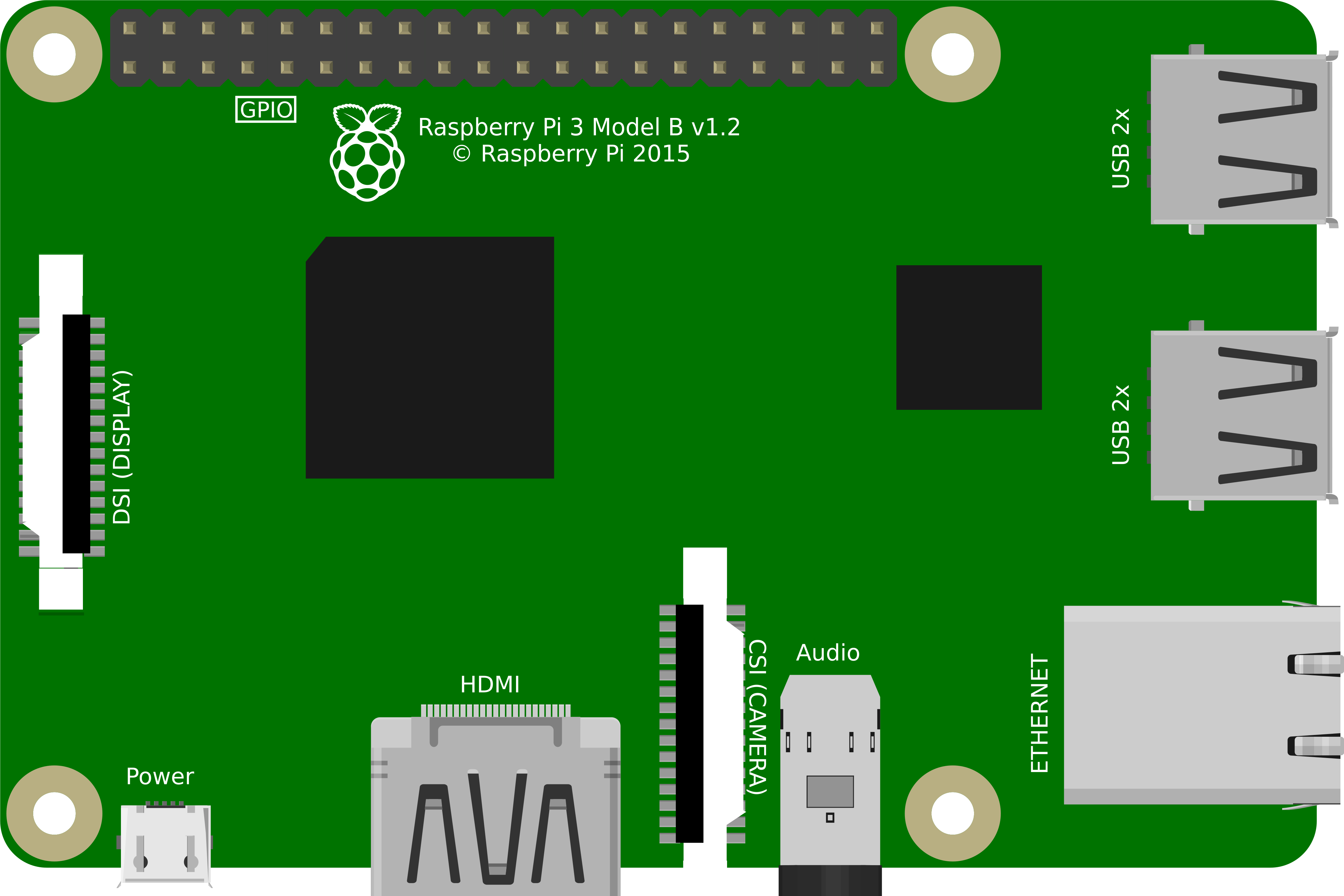
 Design with Raspberry Pi 3B in Cirkit Designer
Design with Raspberry Pi 3B in Cirkit DesignerIntroduction
The Raspberry Pi 3 Model B is a powerful single-board computer developed by the Raspberry Pi Foundation. It is widely used for educational purposes, hobbyist projects, and even in commercial applications. The Raspberry Pi 3B is equipped with a quad-core ARM Cortex-A53 processor and includes onboard wireless LAN, Bluetooth Low Energy, and USB ports. It is capable of running a variety of Linux-based operating systems and supports a range of programming languages, making it a versatile tool for learning about computing and for developing electronic projects.
Explore Projects Built with Raspberry Pi 3B
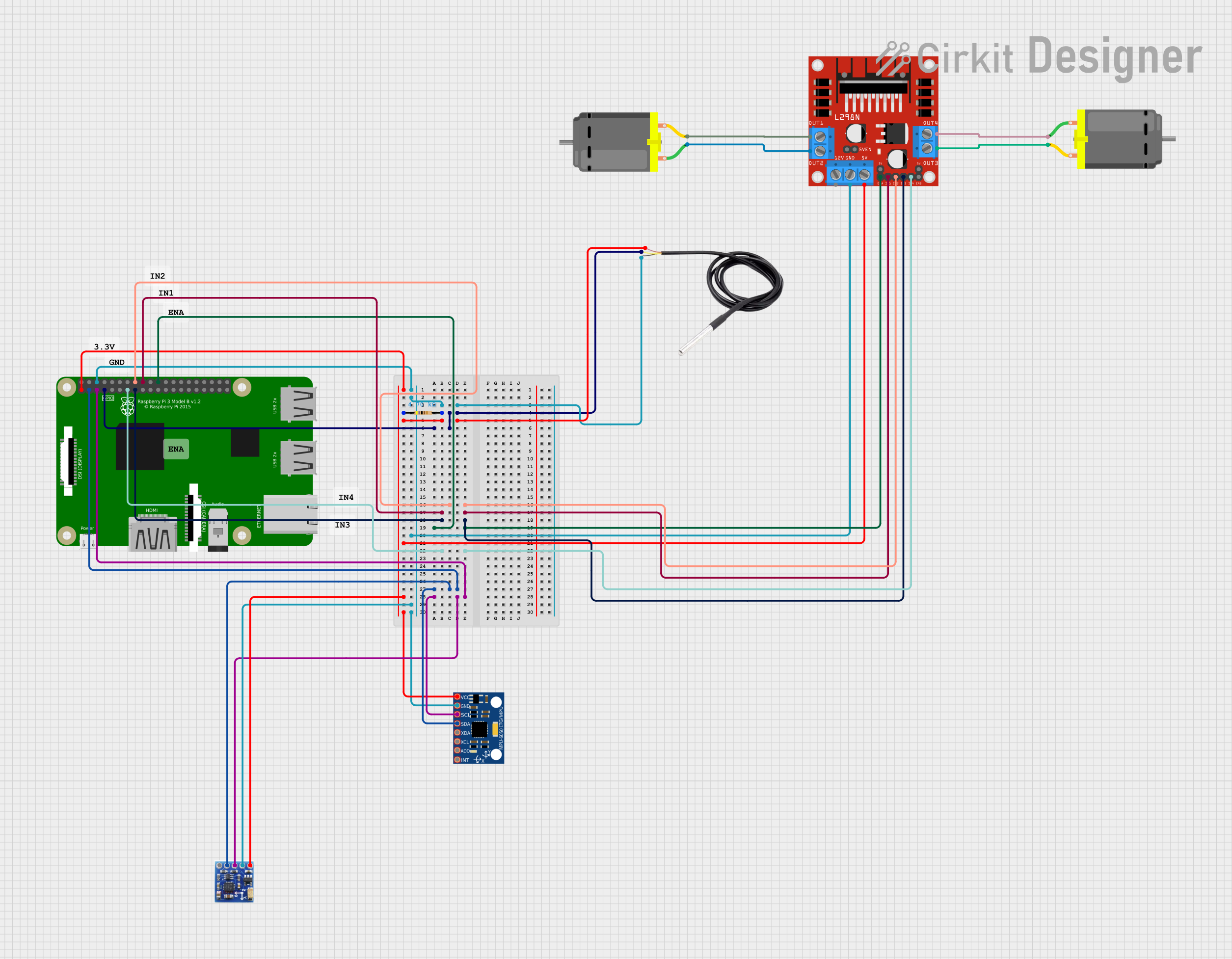
 Open Project in Cirkit Designer
Open Project in Cirkit Designer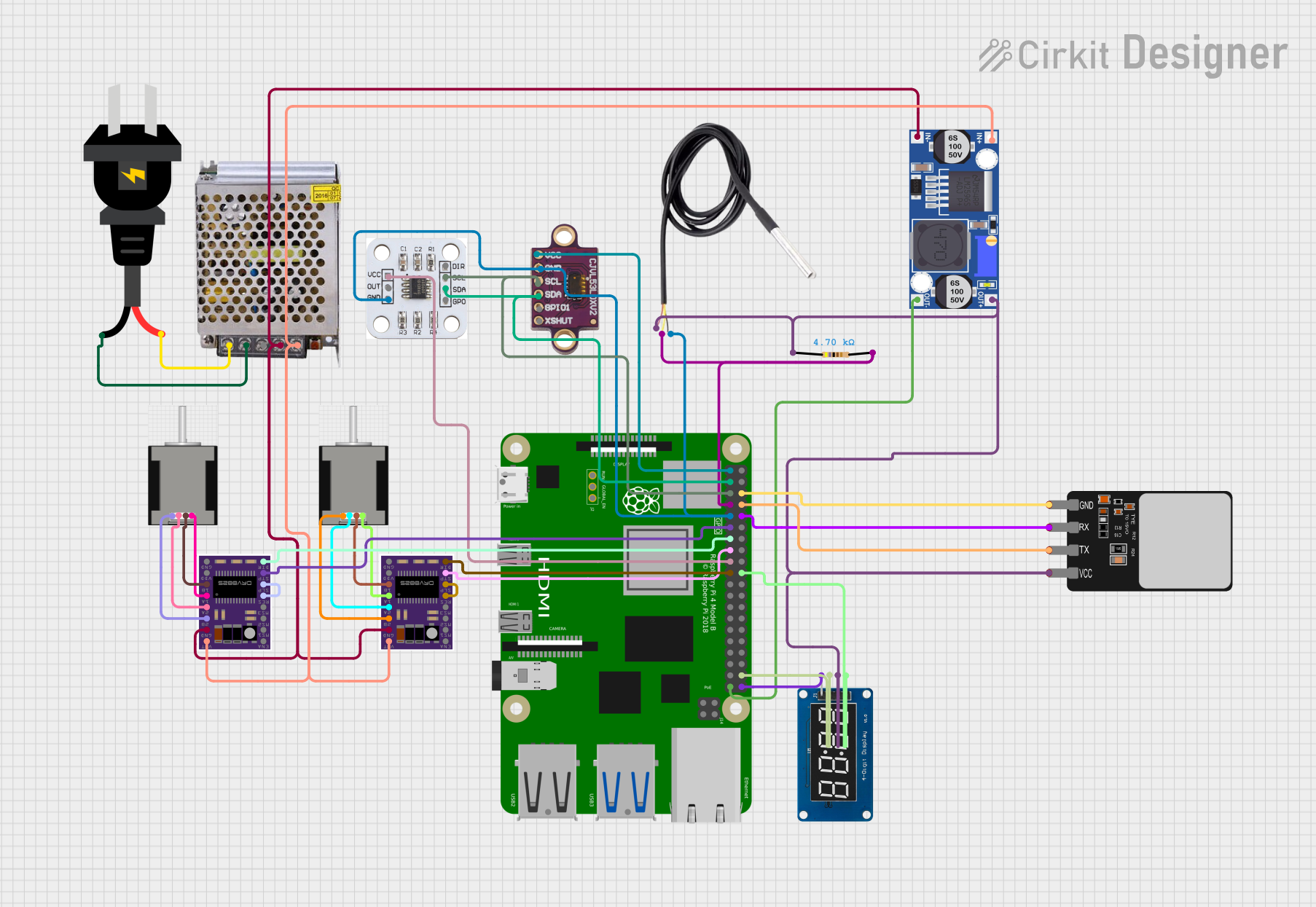
 Open Project in Cirkit Designer
Open Project in Cirkit Designer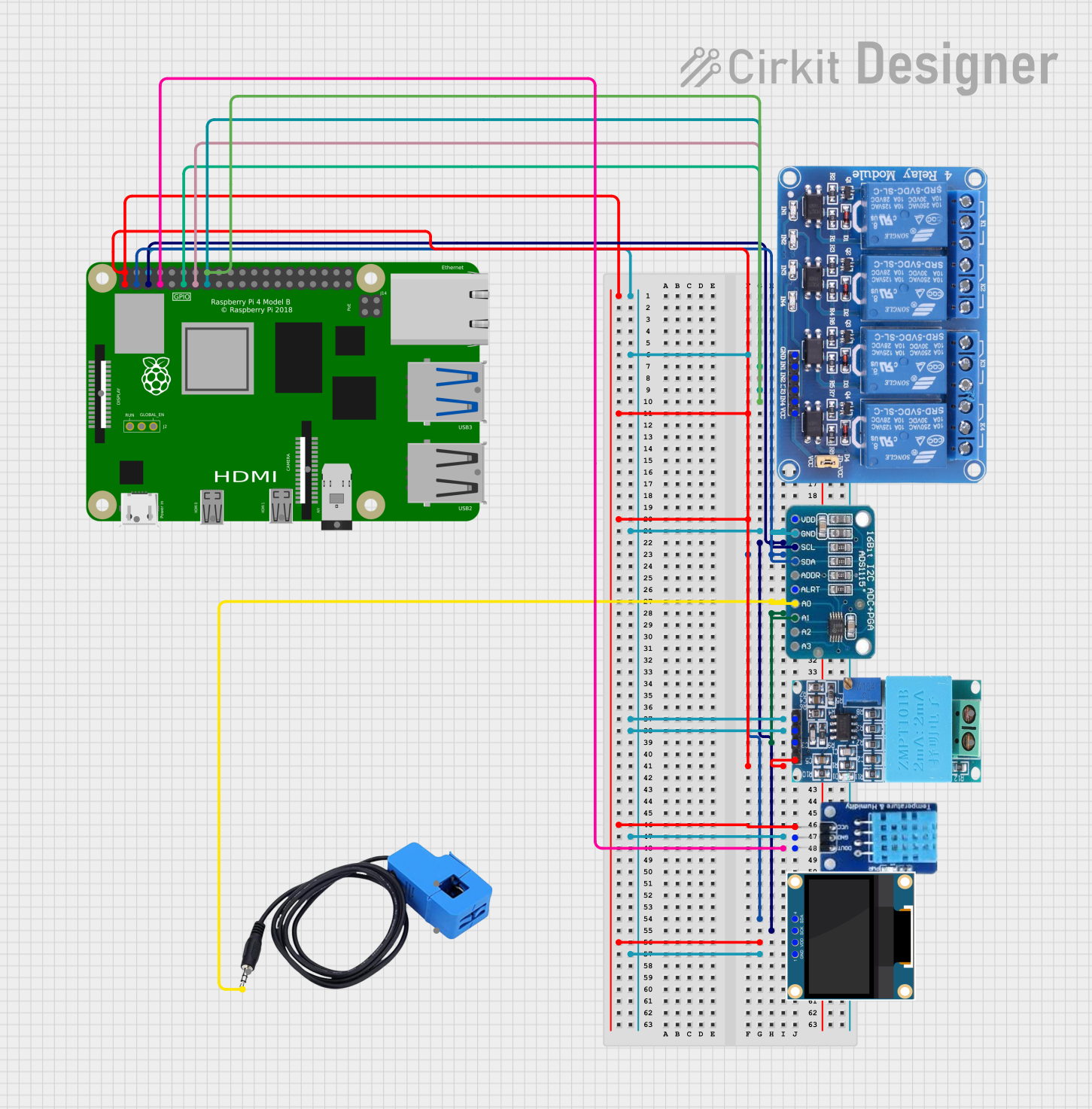
 Open Project in Cirkit Designer
Open Project in Cirkit Designer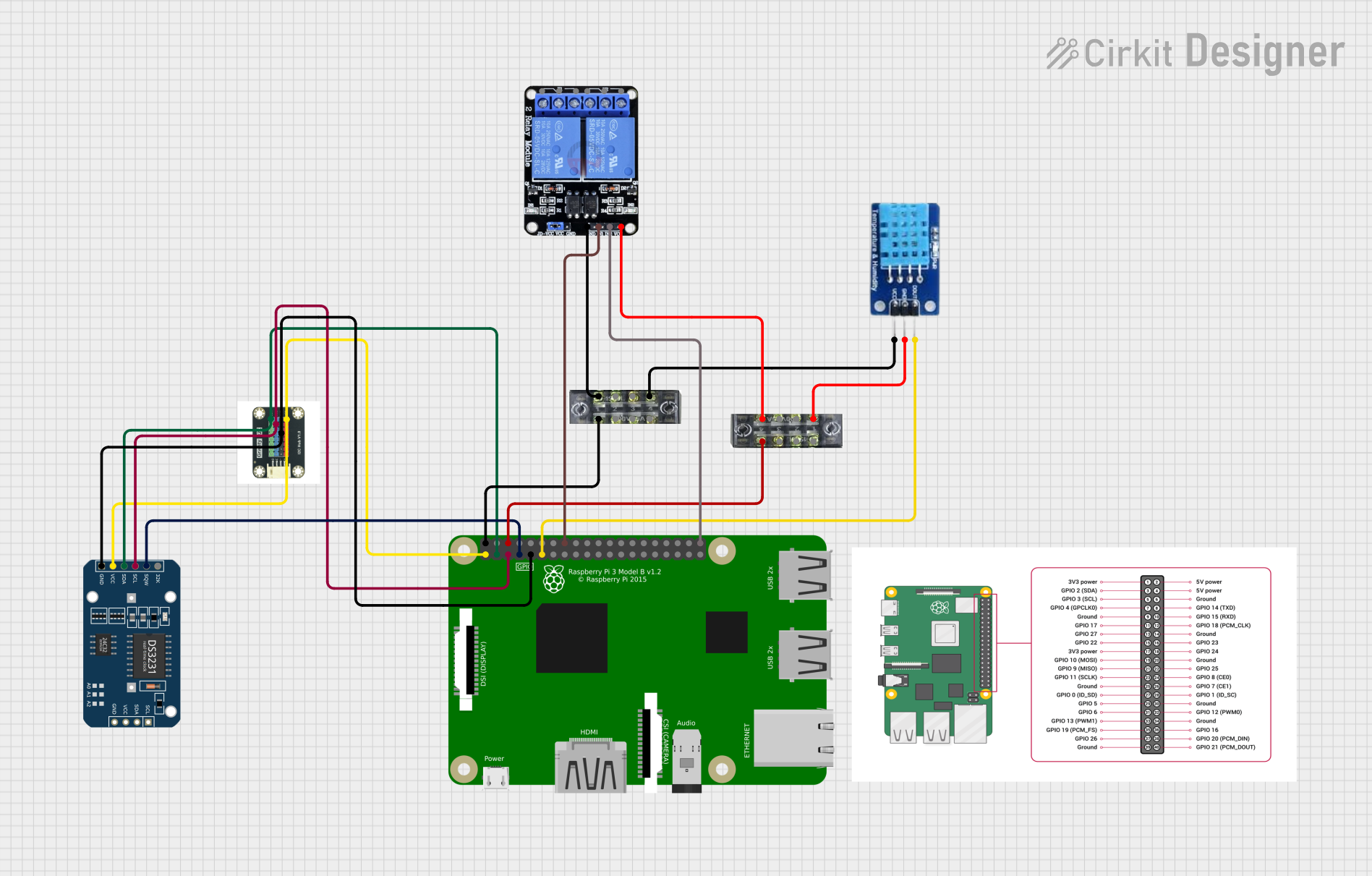
 Open Project in Cirkit Designer
Open Project in Cirkit DesignerExplore Projects Built with Raspberry Pi 3B

 Open Project in Cirkit Designer
Open Project in Cirkit Designer
 Open Project in Cirkit Designer
Open Project in Cirkit Designer
 Open Project in Cirkit Designer
Open Project in Cirkit Designer
 Open Project in Cirkit Designer
Open Project in Cirkit DesignerCommon Applications and Use Cases
- Educational tools for teaching programming and computer science concepts
- Home automation and Internet of Things (IoT) devices
- Media centers for streaming and playback
- Retro gaming consoles
- Prototyping for software and hardware development
- Robotics and embedded systems projects
Technical Specifications
Key Technical Details
- CPU: Broadcom BCM2837, Quad-core Cortex-A53 (ARMv8) 64-bit SoC @ 1.2GHz
- RAM: 1GB LPDDR2 SDRAM
- Networking: 10/100 Ethernet, 2.4GHz 802.11n wireless LAN
- Bluetooth: Bluetooth 4.1, Bluetooth Low Energy (BLE)
- GPIO: 40-pin GPIO header, fully backward-compatible with previous boards
- Storage: MicroSD card slot for loading operating system and data storage
- USB Ports: 4 × USB 2.0 ports
- Video Output: Full-size HDMI, Composite video (3.5mm jack)
- Audio Output: 3.5mm analog audio-video jack, HDMI
- Camera Interface (CSI)
- Display Interface (DSI)
- Power Source: 5V/2.5A DC via micro USB connector or GPIO
Pin Configuration and Descriptions
| Pin Number | Description | Pin Number | Description |
|---|---|---|---|
| 1 | 3.3V Power | 2 | 5V Power |
| 3 | GPIO2 (SDA1, I2C) | 4 | 5V Power |
| 5 | GPIO3 (SCL1, I2C) | 6 | Ground |
| 7 | GPIO4 (GPCLK0) | 8 | GPIO14 (TXD0, UART) |
| 9 | Ground | 10 | GPIO15 (RXD0, UART) |
| ... | ... | ... | ... |
Note: This table shows a subset of the GPIO pins for brevity. Refer to the full GPIO pinout diagram for complete details.
Usage Instructions
Setting Up the Raspberry Pi 3B
- Prepare the MicroSD Card: Download the latest version of a Raspberry Pi-compatible OS (e.g., Raspberry Pi OS) and write it to the MicroSD card.
- Connect Peripherals: Attach a keyboard, mouse, and monitor to the Raspberry Pi via the USB ports and HDMI port.
- Power Up: Connect the micro USB power supply to the Raspberry Pi. Ensure that the power supply is capable of providing at least 5V and 2.5A.
- Initial Configuration: Follow the on-screen setup instructions to configure the Raspberry Pi, including setting up Wi-Fi and updating the system.
Important Considerations and Best Practices
- Always shut down the Raspberry Pi properly before disconnecting the power to avoid corrupting the SD card.
- Use heat sinks and ensure proper ventilation to prevent overheating during operation.
- Keep the Raspberry Pi and its connectors clean and free from dust.
- Regularly back up the SD card to prevent data loss.
Troubleshooting and FAQs
Common Issues
- Raspberry Pi doesn't boot: Ensure the SD card is properly inserted and contains a valid OS. Check the power supply and LED indicators for signs of power issues.
- Wi-Fi or Bluetooth not working: Verify that the country code is set correctly in the Wi-Fi settings and that there are no physical obstructions or interference.
- Overheating: If the Pi is running hot, consider using heat sinks, a fan, or moving it to a cooler location.
Solutions and Tips for Troubleshooting
- LED Indicators: The green LED should flash irregularly during boot. If it shows a specific pattern, refer to the official documentation for error codes.
- Power Supply: Use an official Raspberry Pi power supply or a reputable brand with the correct specifications.
- Software Updates: Keep the Raspberry Pi's software up to date with the latest patches and updates for improved stability and performance.
FAQs
- Can I use any MicroSD card?
- It's recommended to use a high-quality, class 10 MicroSD card with a minimum of 8GB capacity for optimal performance.
- How do I access the Raspberry Pi remotely?
- You can enable SSH or VNC through the Raspberry Pi configuration settings and connect to it from another computer on the same network.
- Can I power the Raspberry Pi from a computer USB port?
- It is not recommended as most computer USB ports do not supply enough current to reliably power the Raspberry Pi.
Note: This documentation is a starting point for using the Raspberry Pi 3 Model B. For more detailed information, refer to the official Raspberry Pi documentation and community forums.